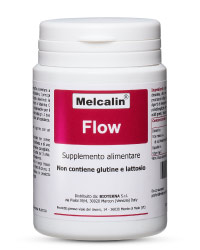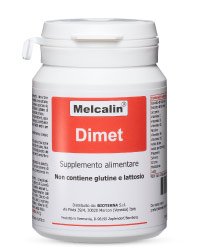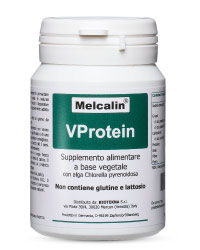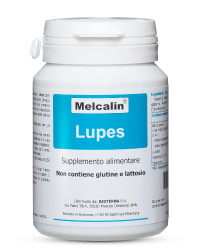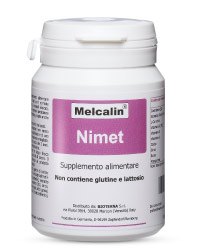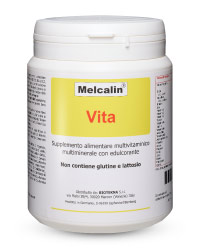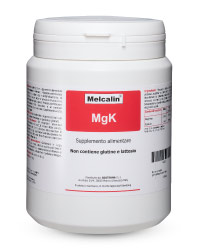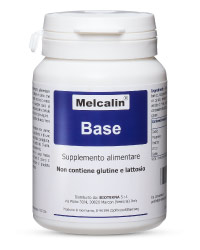Introduction
The cellular energy metabolism includes all of the processes that generate cellular energy (ATP) following the demolition of sugar (glycolysis), lipids, and small percentage of proteins.
ATP production is essential for the proper performance of vital functions as cellular reactions and processes of the body that require energy are supplied from the conversion of ATP to ADP; among them there are, for example, the transmission of nerve impulses, muscle contraction, active transport through plasma membranes, protein synthesis and cell division.
There are several vitamins and minerals that help the metabolic processes and for every need you can choose the supplementation which is most appropriate for remedying the problems.
Melcalin Dimet, Melcalin Nimet and Melcalin Vita are three supplements that, in different ways, assist the food and physical therapies to improve the health of the patient (see. TAM: alkalizing and Metabolic Therapy – MUS Recovery).
Vitamins and energetic metabolism of carbohydrates, lipids and proteins
Vitamins play an essential role in reactions that affect the metabolism of proteins, carbohydrates and lipids: lipid metabolism is affected by vitamins such as vitamin B1 (thiamine)1 as well as by folate and vitamins B6 and B12; the deficiency of these vitamins It has an atherogenic effect resulting in a significant increase in the lipid deposition in the aortic adventitia 2; studies on the activity of vitamin B6 have revealed that the administration at high doses of pyridoxine in individuals who followed a diet high in fat and cholesterol determines the decrease in the concentration of lipids3,4,5. Riboflavin (B2) is converted into coenzymes that are involved in the synthesis of fatty acids while vitamin C is able to significantly decrease the values of in serum cholesterol and promote the transformation of cholesterol into bile acids6,7. Niacin can be very effective in order to reduce LDL, cholesterol and triglyceride levels and increase HDL values: it was demonstrated that its administration in combination with lipid-lowering drugs (for example, bile acid sequestrants) reduced the incidence of cardiovascular events and slowed the progression of coronary lesions8,9.
The B group vitamins are essential for the metabolism of carbohydrates, in fact, they help to convert carbohydrates into energy (ATP)10: a deficiency of vitamin B1 (thiamine) causes complications similar to those that occur in metabolic syndrome as endothelial dysfunction The administration of thiamine, in deficient subjects, can prevent the formation of harmful byproducts of glucose metabolism, reduce oxidative stress and improve endothelial function11, while the administration of vitamin B12 lowers blood sugar.
The B group vitamins are also involved in protein metabolism: many amino acid reactions depend on the presence of vitamin B6, because this vitamin involved in the transport of amino acids to the cells, assists in the construction of amino acids along with other enzymes and is involved in the synthesis and metabolism of choline, methionine, serine, cysteine, tryptophan and niacin12,3. Folate is another essential nutrient involved in many metabolic processes including the formation of amino acids and the synthesis of nucleotides (DNA) 14.
Minerals and metabolism
Among the minerals involved in the metabolism of carbohydrates15,16 there is zinc, copper and chromium.
A dietary deficiency of is zinc adversely affects glucose utilization: a deficiency in the diet during pregnancy affects fetal development and metabolism of carbohydrates.
A diet low in copper causes a reduced insulin response, therefore, the use of glucose by peripheral tissues and the release of insulin can be affected17,18. Chromium is an essential nutrient involved in the metabolism of carbohydrates and of lipids: researches in this regard show that this mineral is able to improve insulin sensitivity and is effective in reducing blood lipids19,20,21.
Other compounds with energetic action
Coenzyme Q10 (CoQ10) is an organic molecule useful for the production of energy28, a deficiency determines both disorders of the respiratory chain, leading to alterations in energy metabolism, and the decrease in the mitochondrial membrane potential, which in turn induces apoptosis . The causes of deficiency are related to several factors: mutation of the gene for its synthesis, inhibition of the biosynthesis of HMG CoA reductase, taking statins, aging and cancer25.
L-carnitine is another important factor in cellular energy metabolism. It is spread throughout the body but the main concentrations are found in the most active metabolic tissue such as the myocardium and skeletal muscle. It is biosynthesized within the human body using the amino acids L-lysine and L-methionine and is present in many foods such as red meat.
The L-carnitine is essential for the transport of long chain fatty acids across the inner mitochondrial membrane up to their site of oxidation, where it will produce energy in the form of ATP; one of the most important consequences of carnitine deficiency is manifested byalteration of the metabolic pathways that lead to the production of energy 22,23,24.
Metabolic control and glycemic load
The term “metabolic syndrome” includes a group of risk factors linked to overweight and obesity that increase the likelihood of heart disease and other health problems such as diabetes and stroke.
A lifestyle that includes a low-glycemic load diet has been shown to improve the metabolic risk profile in men and women: there are more and more studies reporting how low glycemic load diets are able to prevent diabetes, cardiovascular disease and certain types of cancer, including endometrial cancer and esophageal adenocarcinoma (see MUS and subject dysmetabolic – Obesity, type 2 diabetes mellitus, functional gastrointestinal disorders)26,27.
Conclusions
Among the substances useful for improving the metabolism of lipids, carbohydrates and proteins are the B group vitamins and folic acid, minerals such as zinc, copper, chromium and iodine and substances such as coenzyme Q10 (CoQ10) and L-carnitine; depending on the specific needs you can follow a targeted supplementation.
When you need a combined action on lipid, carbohydrate and protein metabolism, Melcalin DIMET constitutes a valuable support thanks to its content in B group vitamins (B1, B2, B6 and B12 along with pantothenic acid and niacin) and folic acid, in addition to minerals such as iodine, magnesium and chromium, which have as target, respectively, the thyroid, the muscle and nerve function and the metabolism of glucose.
Melcalin Nimetcombines the properties of Coenzyme Q10 and L-carnitine to those of minerals such as copper and zinc, involved in the reactions of cell respiration and replication of DNA and RNA; this formulation is useful to ensure sufficient energy production, a decrease in the sensation of fatigue and an improvement in skeletal muscle mass (Skeletal muscle, BIA-ACC BioTekna).
Melcalin Vita is instead a multivitamin and multimineral supplement useful not only to improve the metabolism of carbohydrates, lipids and proteins as a source of B group vitamins, copper and zinc, but also necessary in the summer, when demand for fluids and minerals increases and symptoms such as tiredness and fatigue may worsen.
For further Analysis:






